
Archaeology Open Day: ‘Excavations are cool’
‘We’ve come because our granddaughter started studying archaeology here this year. But I’m really interested in archaeology too.’ The Open Day at the Faculty of Archaeology on 12 October was a field day for archaeology fans: workshops, lectures, activities for children and a pub quiz that covered the full breadth of the discipline.

There is a steady stream of visitors to the Open Day at the enormous Faculty of Archaeology building on Einsteinweg. There can be no mistaking the address, what with the huge inflatable Roman standing guard outside. The visitors can choose from a varied programme. For instance, a lightning talk on topics relating to Leiden, such as the Romeins Vicus project, which is following the course of the Rhine to plot where early settlements would have been. Or Leiden as a real treasure trove or Leiden cloth in archaeology.
The workshops are on topics such as identifying pots and the educational merit of poo in old cesspits. And every half hour a guided tour takes visitors to the many building’s classrooms and labs. Most people think of bones and pots when they think of archaeology, but the discipline involves much more than these alone: botany, zoology and technology, for example.
There is plenty for children to do too, such as working out where in the body a bone from a big pile came from, with the aid of a handy skeleton. Or learning how to identify a sherd.

Daan and Wil Koet: drawn to archaeology from different angles
Leiden couple Daan and Wil Koet have come to the Open Day because their granddaughter has just started an archaeology degree. Merel has always loved archaeology, but decided to study Commercial Economics instead. However, after two years she decided to return to her first love. It must run in the family because her 74-year-old grandma Wil is also really interested in archaeology. She was 12 when her mother gave her a book on life in ancient Egypt. ‘I read it from cover to cover, but couldn’t do much more with my interest. In those days, archaeology wasn’t for girls,’ she says. She’s really pleased that granddaughter Merel has inherited her interest. ‘I’ve always read about the topic and still like watching documentaries on archaeology on National Geographic.’ And she enjoyed taking Merel to museums such as the National Museum of Antiquities when she was little. Or Museum Volkenkunde, the National Museum of Ethnology. ‘That’s related, isn’t it?’
Her husband Daan came to archaeology from a very different angle: he used to install sewage systems, which meant digging up large amounts of soil. He hasn’t kept much, he says, ‘A pipe in the shape of a boot. I’ve heard that they’re rare. You’d buy a pipe like that with the tobacco already inside. Then you’d throw it away after you’d smoked it.’ The throw-away society avant la lettre! Daan doesn’t know exactly how old the pipe is.
It’s clear that Merel can always regale her grandparents, her grandma in particular, with tales about her studies.
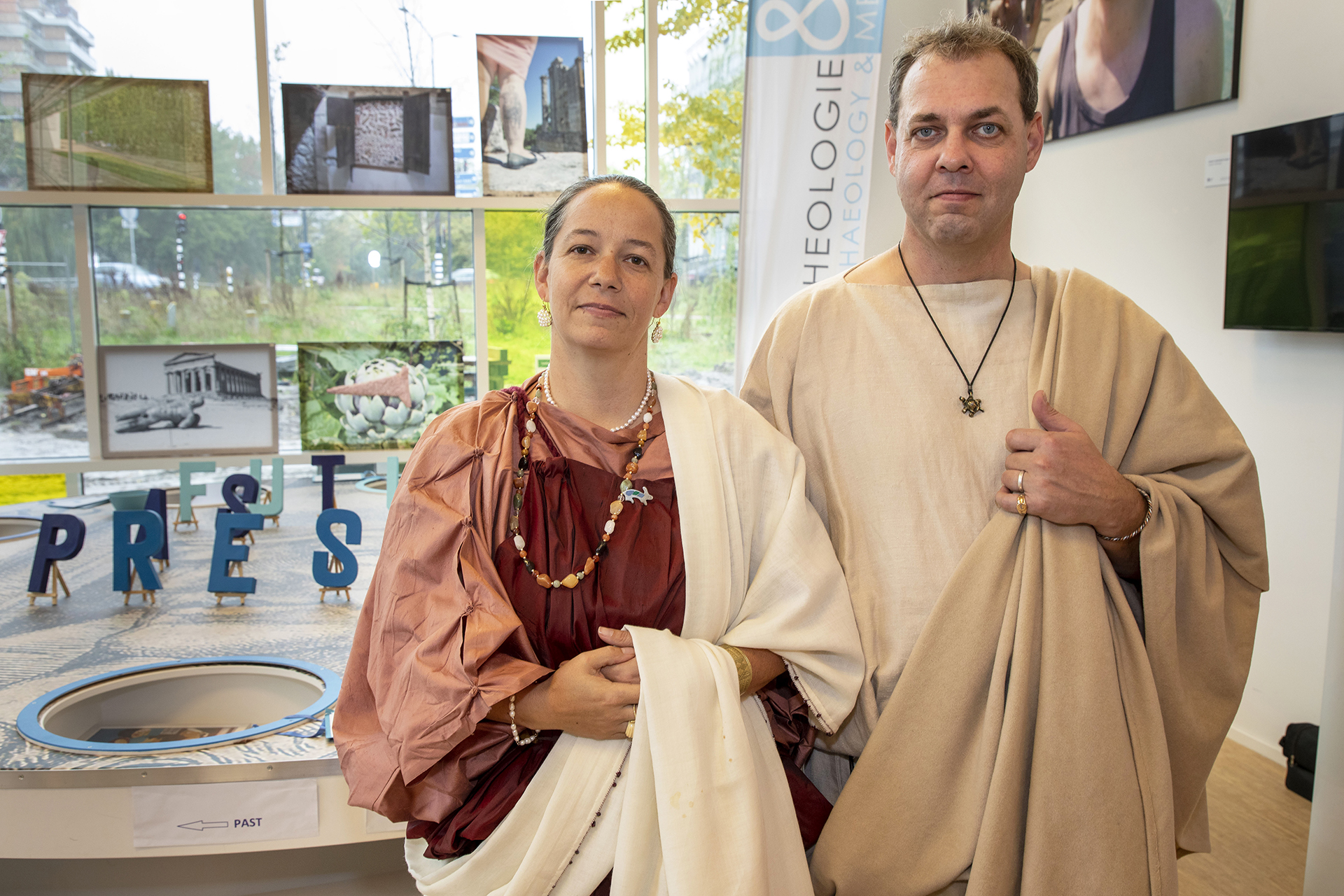
Local colour was provided by the members of Corbulo Reenactment Association, who welcomed the visitors to the Open Day. They were dressed in the authentic costume – shoes and all – of the rich Roman class, from sometime after the year 0: Corbulo focuses on around 69 AD, which is when the eponymous Roman general was alive. He operated in the Leiden area.
The woman is dressed in pure silk and the man in heavy wool. These weren’t work clothes, but were a status symbol of the rich who got others to work for them.
What stands out is the woman’s necklace made from semi-precious stones. It looks like one you’d find in the shops today – which it is. But it’s a faithful replica of a necklace worn by rich Roman women around 69 AD. Except that the golden beads would have been made from real gold rather than the coloured plastic that they are made from today.
Corbulo provides ‘Romans’ from all echelons of society, including soldiers in full battle dress.

Elisabeth (10): a budding archaeologist?
Ten-year-old Elisabeth and her big sister Lauren (18) are early, so for a good while Elisabeth has a private lesson on how to identify a sherd. It requires a lot of patience, but Elisabeth thinks it’s cool. She describes a small bone and a sherd, which means: drawing them, measuring them, describing the material and everything that she notices, all on a rather complicated form. ‘I’ve always liked archaeology,’ says Elisabeth. ‘Excavations are really cool.’ Perhaps it runs in the family because big sister Lauren is in her second year of Egyptology at Leiden. A shared interest therefore. They visit open days and museums together.
This afternoon, the sisters will definitely be going to the workshops on identifying bones and pots. These are separate workshops because these are two very different disciplines. Can we say that Elisabeth is a budding archaeologist? She laughs somewhat hesitantly. ‘I think so, but I’m not 100% sure.’

Erik Elshout: ‘Human behaviour is what interests me’
Erik Elshout from The Hague used to be a quality manager and is now an amateur archaeologist at the Archaeological Workgroup of the Netherlands (AWN) [in Dutch]. ‘I’m really curious about human behaviour,’ he explains. ‘How did people live in the past? How did they stay alive? How did they keep their feet dry? How did they find water if there was none around? Life was very basic at the time. That’s what intrigues me.’ Now technology has also reached archaeology, Erik is going to the workshop that will tell him what it has to offer the discipline.
Erik tells us a bit more about the AWN. ‘It organises plenty of activities for the public,’ he says. ‘Such as archaeological cycle tours in the area of The Hague and activities for schools.’ Erik trained in technology, he says, ‘My work focused on software innovation.’ He has now followed various archaeology courses. At the Open University as well as the free Leiden MOOC Osteoarchaeology: the Truth in our Bones. Could the MOOC Heritage under Threat be something for him, although it does take a very different perspective?
All the visitors are given a bag with information about the University’s 444 activities.
-
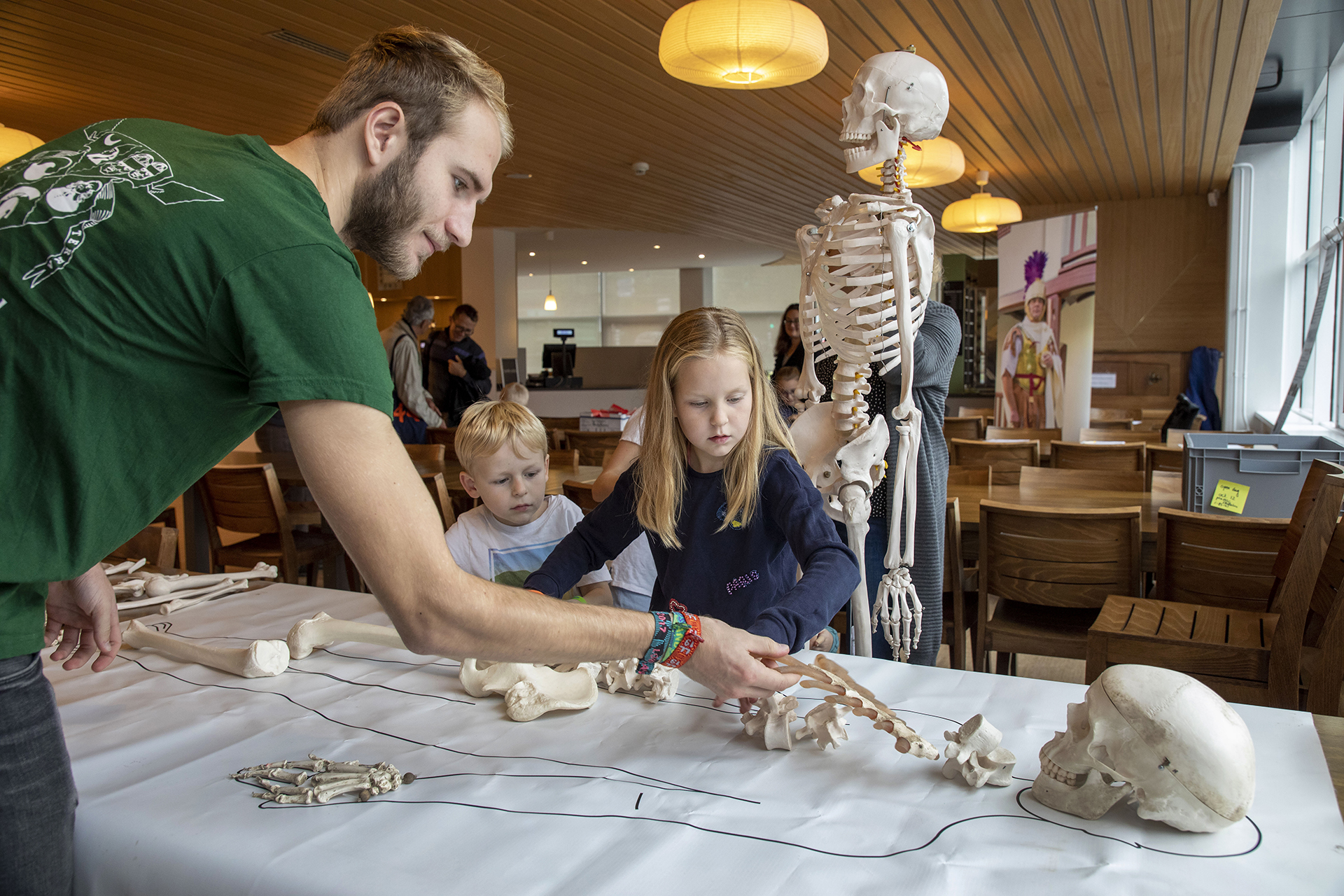
Which bone belongs where in the body? -
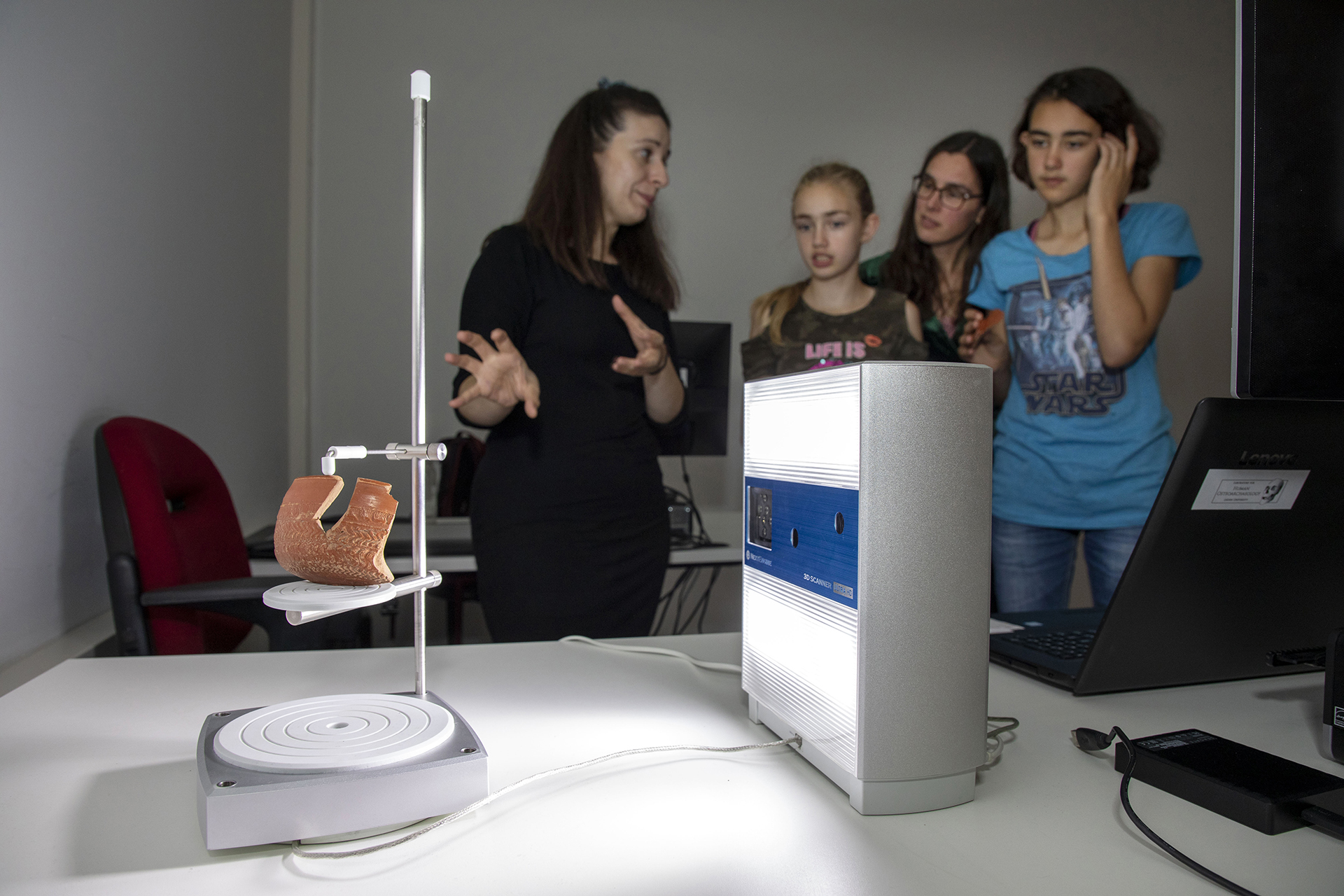
A 3D scan of an object means you can study it in detail without having to touch it. -
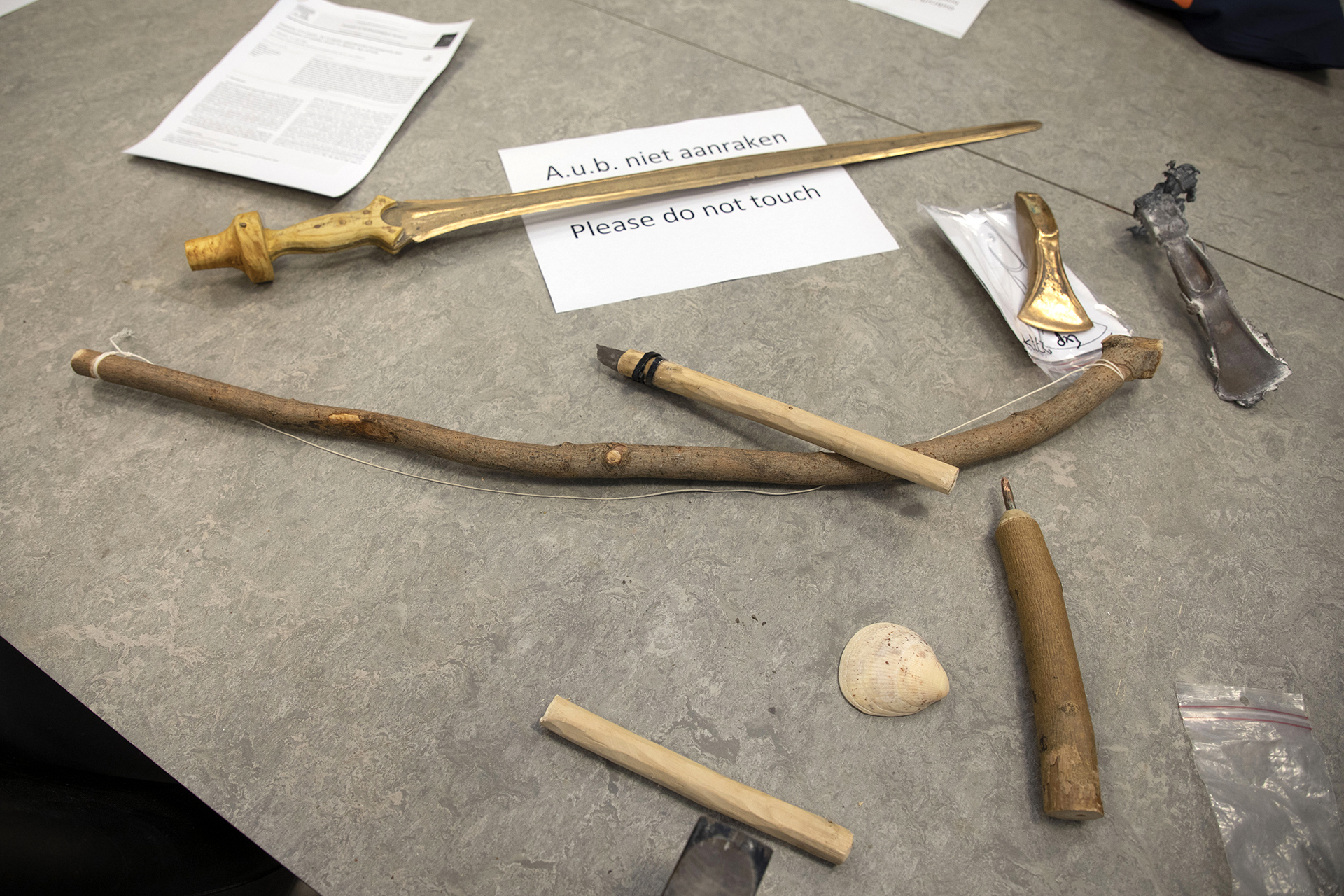
Archaeologists in Leiden reproduce and use everyday objects. This helps them find out how our ancestors used them. -
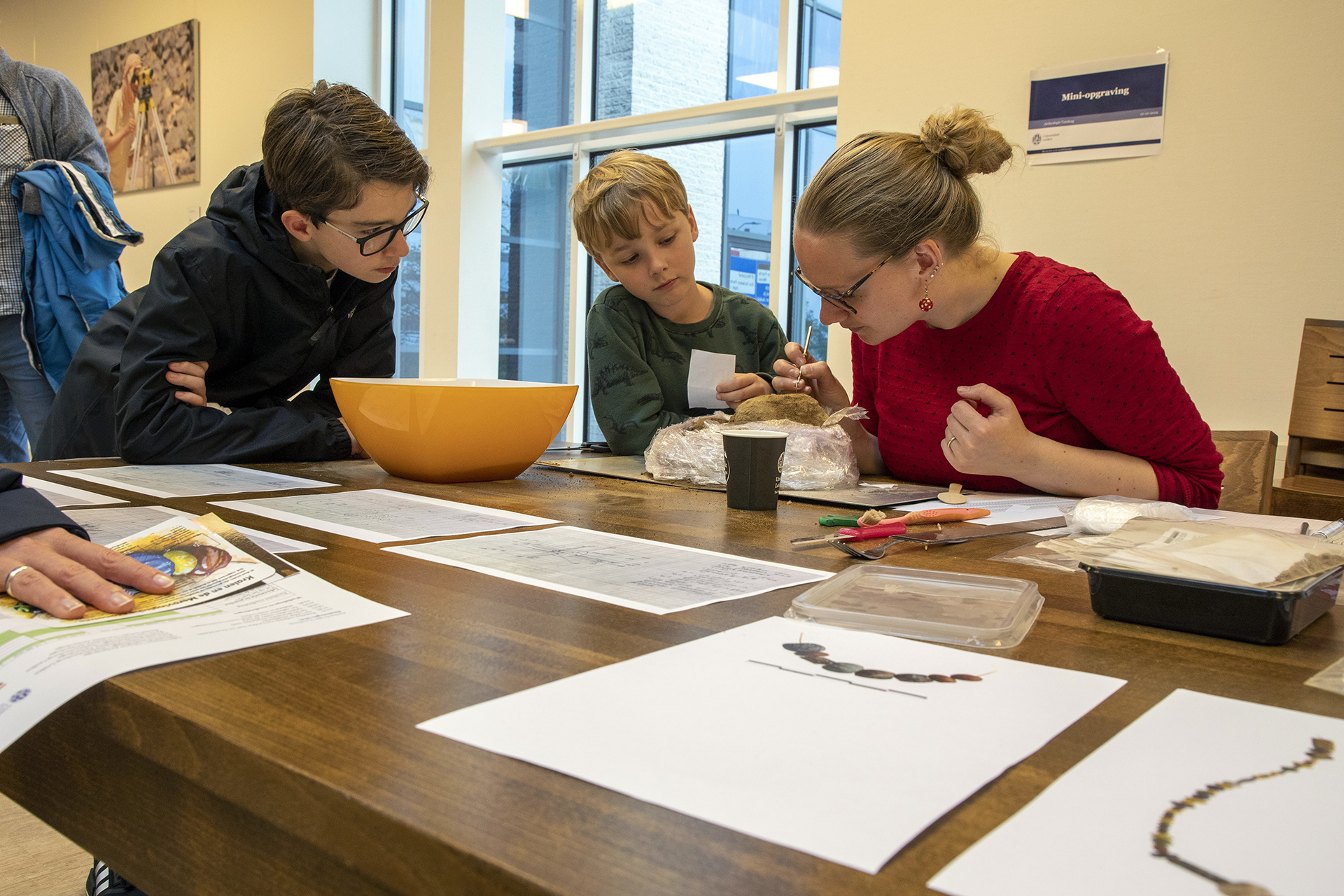
The mini excavation shows how much patience and precision are required in archaeology. -
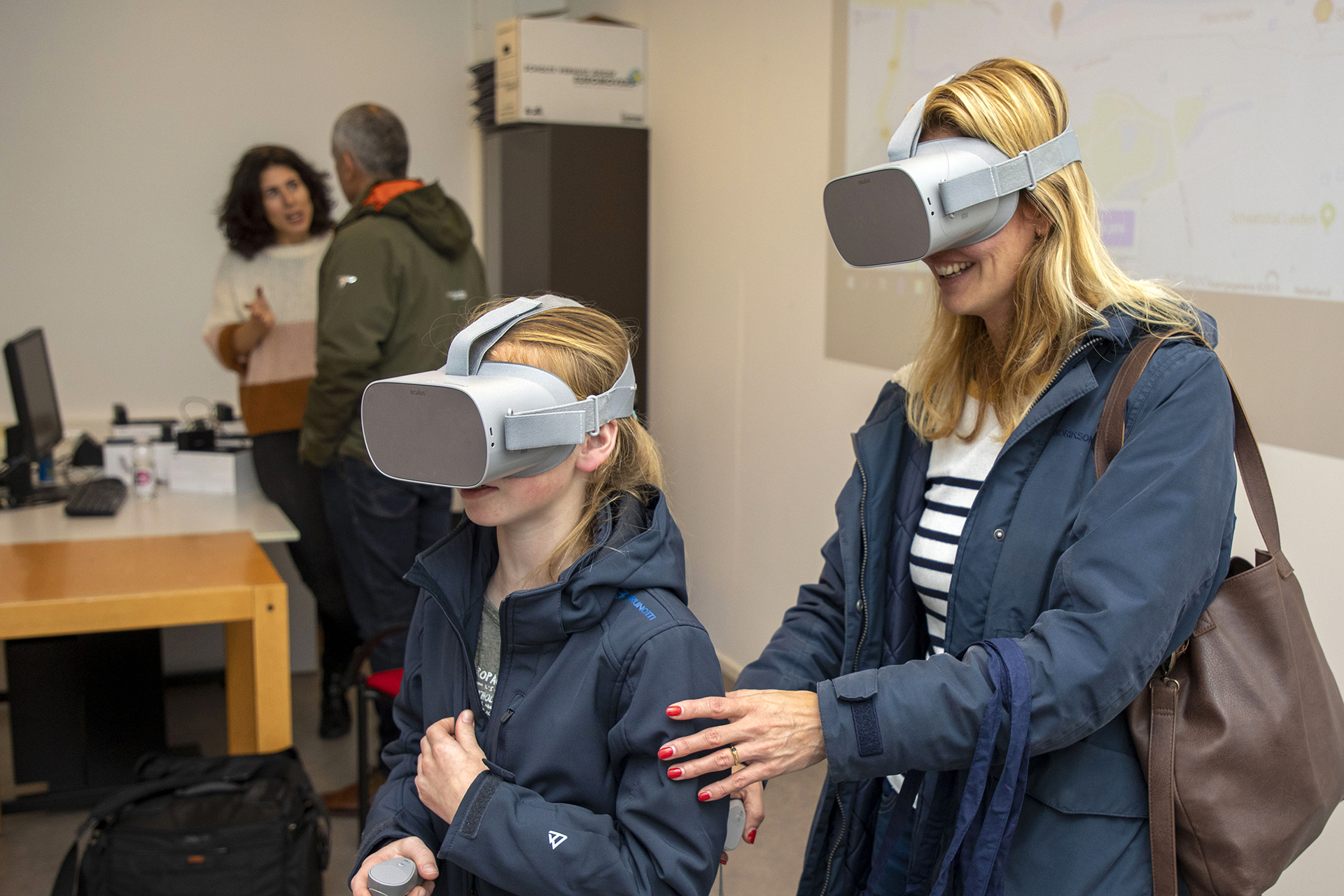
Archaeology students gain their first practical experience at a virtual excavation... -
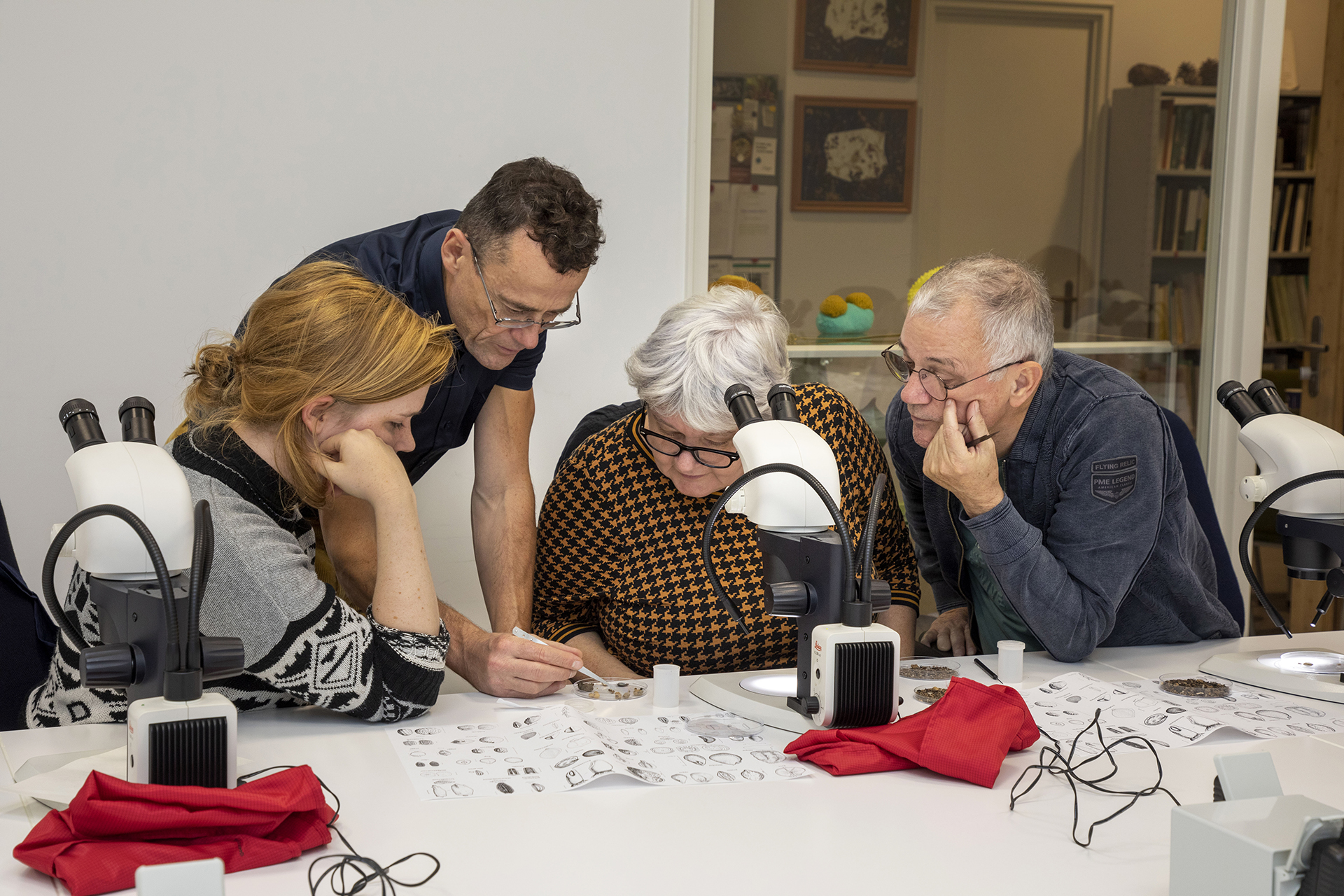
What can we learn from poo from a very old cesspit? -
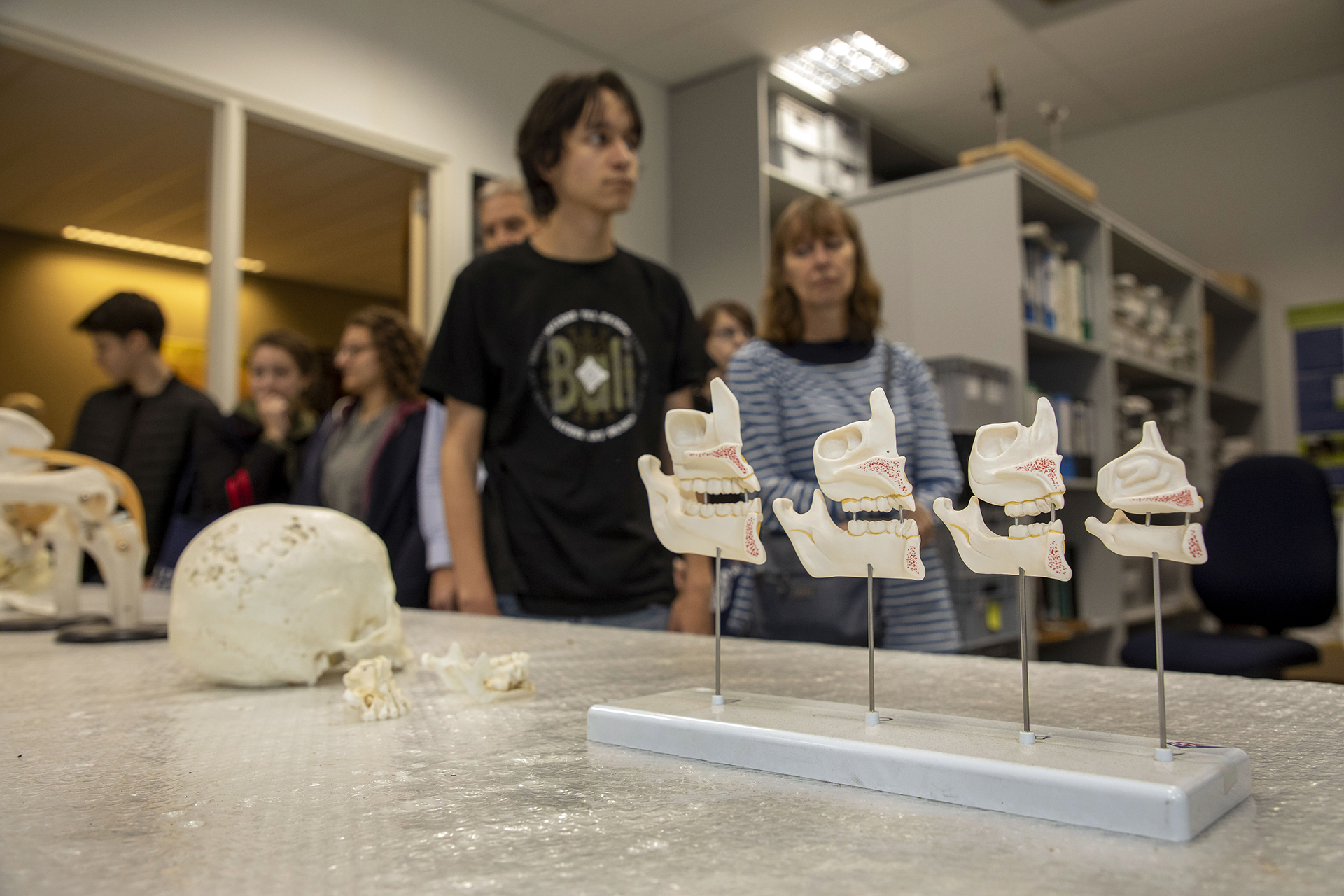
Precise replicas are made of much bone material, so that the original can be left unharmed. -
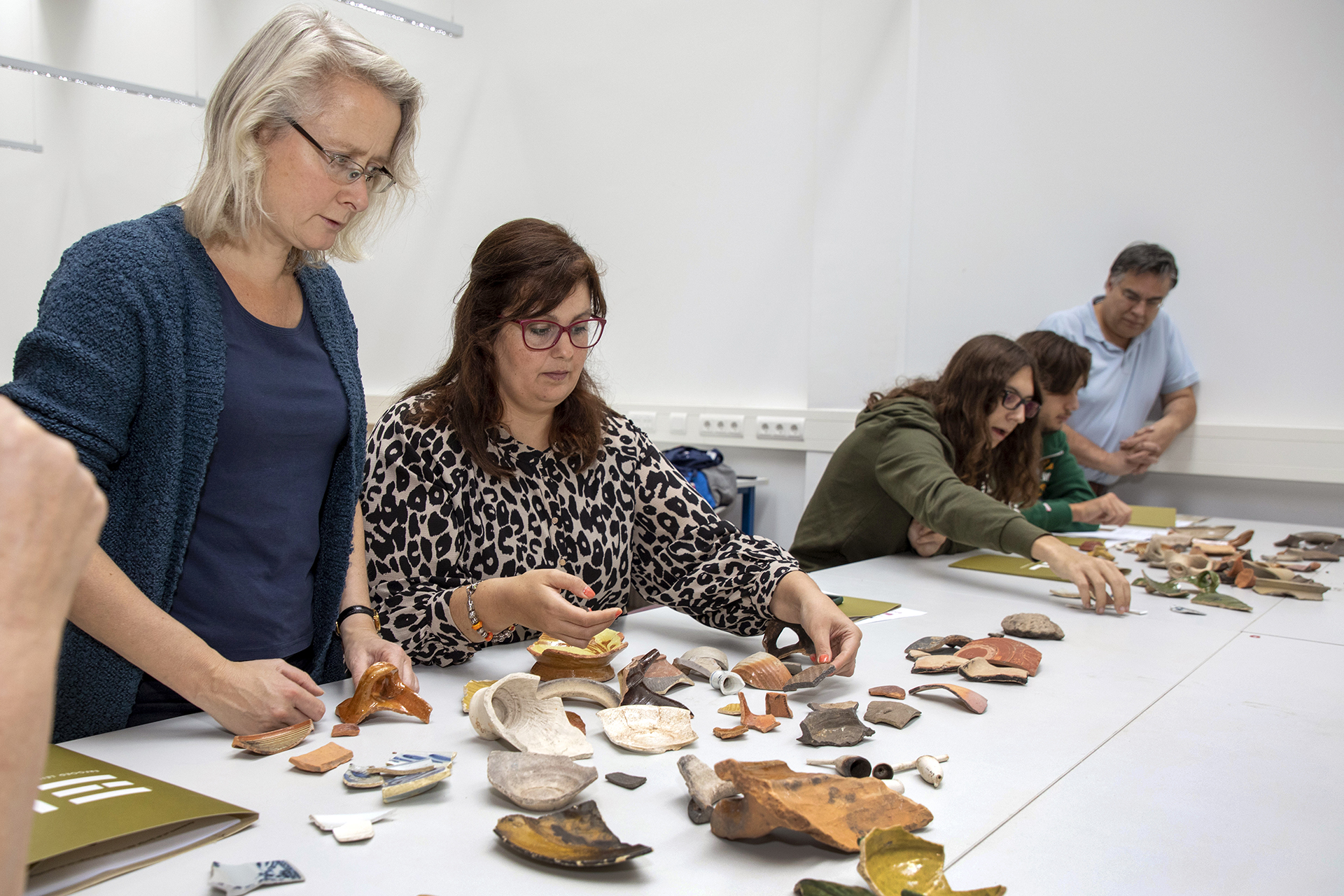
How can you date a pot when all that remains is a sherd? -
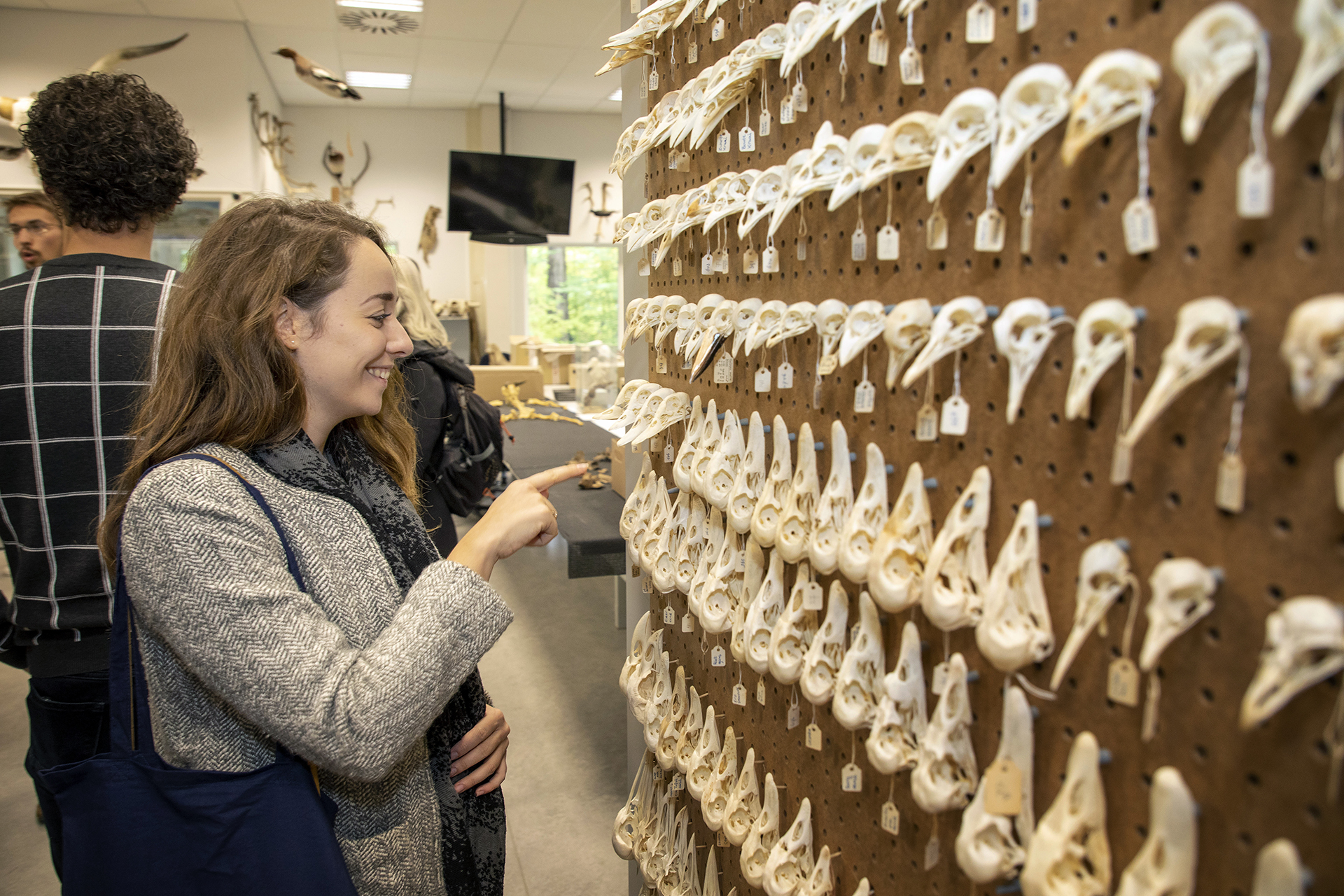
The Faculty of Archaeology is currently putting together a reference collection of birds. Archaeologists who find birds can compare them with ones in the collection. -
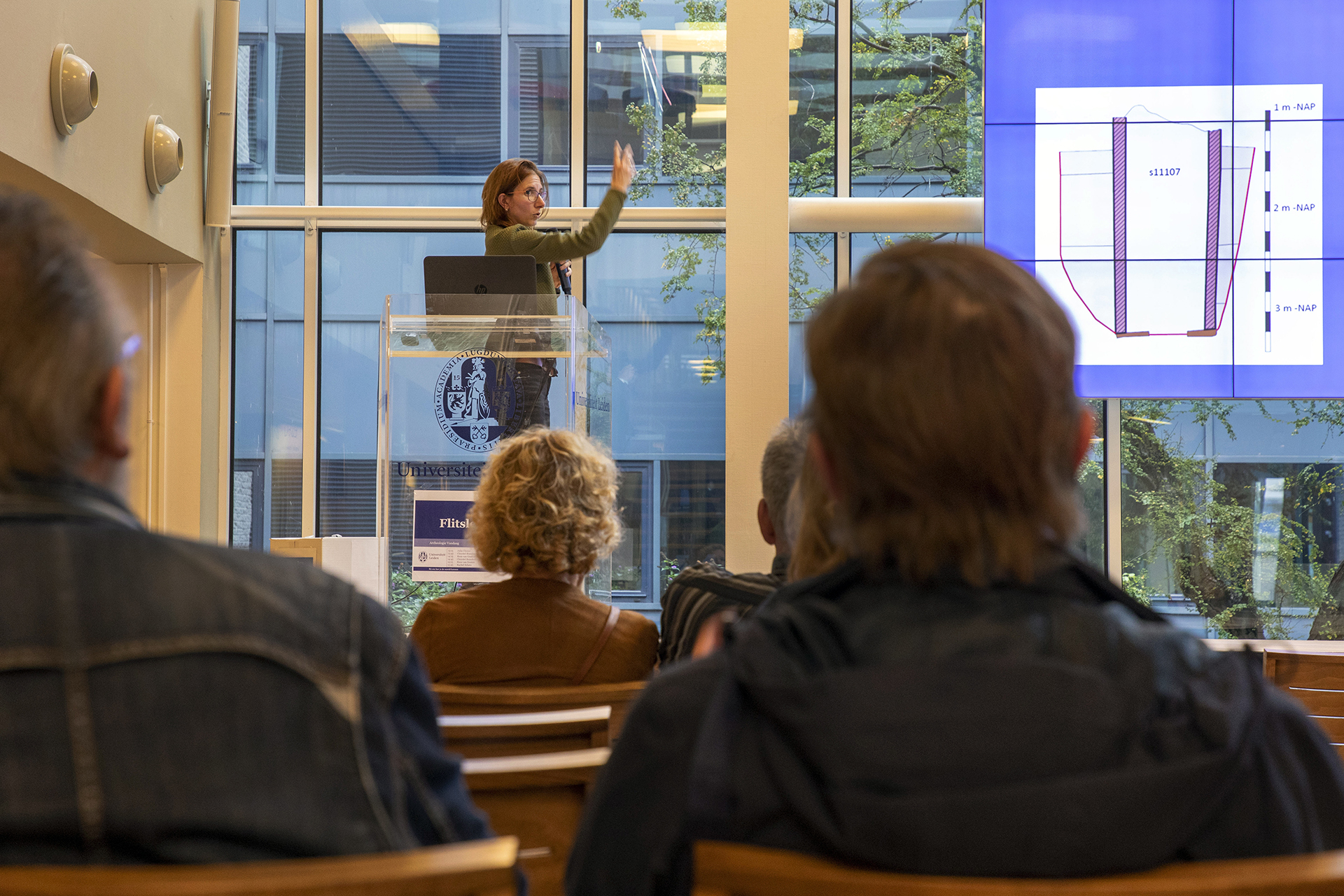
Lecture by Roos van Oosten on 'The faecal question around 1600'
Text: Corine Hendriks
Photos: André van Haasteren
Mail the editors
